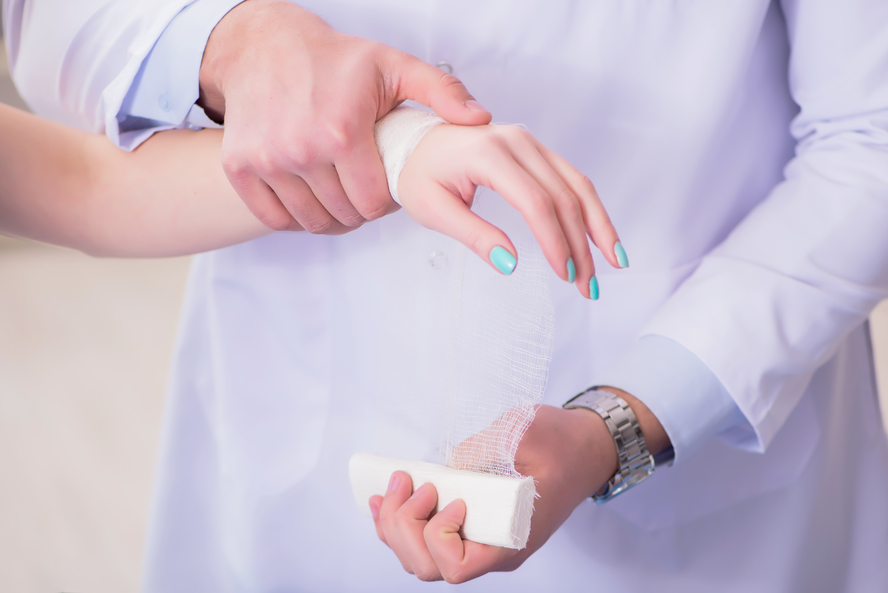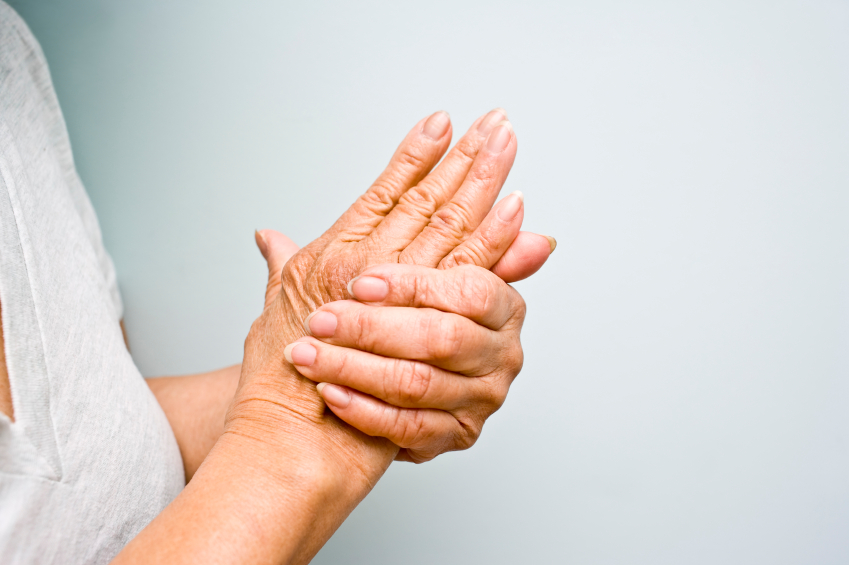Diagnosis and Treatment of Hand and Wrist Sprains in Wake County

What are Hand and Wrist Sprains?
A hand and/or wrist sprain occurs when the ligaments that support the hand/wrist stretch beyond their normal limits, leading to a potential tear. Ligaments are strong, fibrous tissues that keep your bones in the proper position and stabilize the joint. Certain actions can cause the sudden twisting or bending of the wrist, such as falling onto an outstretched hand. Hand/wrist sprains are common injuries and can range from mild to severe, depending on how much damage there is to the ligaments.

Grades of Hand and Wrist Sprains
Sprains are graded depending on the degree of injury to the ligaments. Treatment for your hand/wrist sprain will depend on the severity of your injury.
- Grade 1 sprain (mild): The ligaments are overstretched, but there are no tears.
- Grade 2 sprain (moderate): The ligaments are partially torn. You may lose some mobility and need a splint or brace to help with recovery.
- Grade 3 sprain (severe): The ligament is completely torn or separated from the bone. You may need surgery for this type of injury. If the ligament tears away from the bone, it may take a small chip of bone with it – this is called an avulsion fracture.

Causes of Hand and Wrist Sprains
In general, a hand or wrist sprain is caused by physical trauma to the area. This might happen during everyday activities but frequently occurs during outdoor sports and recreation, such as basketball, gymnastics, mountain biking, or skateboarding. Hand and wrist sprains can happen to anyone, not just athletes. Wrist sprains can occur during any sudden accident, such as slipping on ice or tripping over a household object. You may experience a wrist sprain if your wrist:
- Suddenly twists
- Moves in an abnormal position
- Bends backward
- Sustains heavy impact
Symptoms of Hand and Wrist Sprains
A sprained hand or wrist is very painful, especially when you move it. If you experience wrist pain after an accident or sports injury, we recommend scheduling an appointment with an orthopedic specialist so you can receive a proper diagnosis and treatment plan. Other common symptoms of wrist sprains include:
- Swelling
- Bruising
- Tenderness to touch
- A feeling of popping or tearing inside the wrist
- A feeling of warmth around the wrist
How are Hand and Wrist Sprains Diagnosed?
After discussing your medical history and general health, your doctor will ask about any previous injuries to your hand or wrist. Then, your doctor will carefully examine your wrist, hand, and arm to determine where it hurts and to check how it moves. Tenderness in certain areas may be indicative of a broken bone. Your doctor may order imaging tests, such as an X-ray, to help confirm the diagnosis. Possible tests include:
- X-ray: Although an X-ray will not show the ligaments themselves, the results can suggest a ligament injury if the wrist bones do not line up correctly. An X-ray can also help your doctor rule out a broken bone.
- MRI or CT scan: If more information regarding your injury is needed, an MRI or CT scan may also be ordered. These tests create images of your ligaments and tendons so your doctor can check the severity of your injury.

Treatment for Hand and Wrist Sprains at Raleigh Orthopaedic
Treatment for a hand and wrist sprain depends on the severity of the injury. At home, you can treat a mild wrist sprain using the RICE method:
- Rest: Avoid using your wrist for 48 hours. Refrain from activities that involve your wrist, like writing with a pen.
- Ice:. Apply ice immediately after the injury to keep the swelling down, and then use cold packs for 20 minutes at a time, two or three times each day. Do not apply ice directly to the skin.
- Compression:. Wrap a compression bandage around your wrist to minimize swelling.
- Elevation:. Rest with your wrist above your heart as often as possible.
Anti-inflammatory medications, such as aspirin and ibuprofen, can also help to reduce pain and swelling. If your symptoms persist for more than 48 hours, contact your doctor immediately. If you have a moderate sprain, you may need a splint or brace to immobilize your wrist as it heals. Because immobilization may cause some stiffness in your wrist, your doctor may recommend stretching exercises to help you regain your full range of motion.
Severe sprains may require surgery to repair the fully torn ligament. Surgery for a sprained wrist involves reconnecting the ligament to the bone or using a tendon graft to reconstruct the injured ligament. Surgery is followed by a period of rehabilitation that includes exercises to strengthen your wrist. The ligament usually heals in 8 to 12 weeks, but it can take anywhere from 6 to 12 months for a full recovery. The length of your recovery and surgical outcome depends on the severity of your sprain.

Recovery from Surgery for Hand and Wrist Sprains
Recovery time from hand and wrist sprain surgery can vary depending on the individual patient and the surgery required. In some cases, full recovery can take up to a year. After surgery, your healthcare provider will usually advise a physical therapy regiment. Exercises and stretches that decrease muscle stiffness and increase range of motion in the wrist can build strength back in the wrist joints.
How to Prevent Hand and Wrist Sprains
Because hand and wrist sprains occur by accident, there is not much that can be done to prevent such injury. There are measures that can be taken, however, to reduce your risk of sustaining a sprain. Most hand and wrist sprains occur as a result of a sports injury. It is important to take proper safety precautions when playing sports to strengthen the muscles and avoid injury. Exercising and stretching can increase muscle flexibility and strengthen tendons in the hand and wrist. It is also important to wear appropriate protective equipment to guard the body in case an accident occurs.

Hand and Wrist Care at Raleigh Orthopaedic Clinic
Raleigh Orthopaedic Clinic provides comprehensive care for all manner of hand and wrist injuries and conditions, including hand and wrist sprains. Our hand surgeons work closely with our on-site Certified Hand Therapists to ensure that you receive the best care possible. We proudly work with athletes and patients of all ages to help them get back to doing what they love. For more information or to schedule an appointment in Wake County, contact us today.




